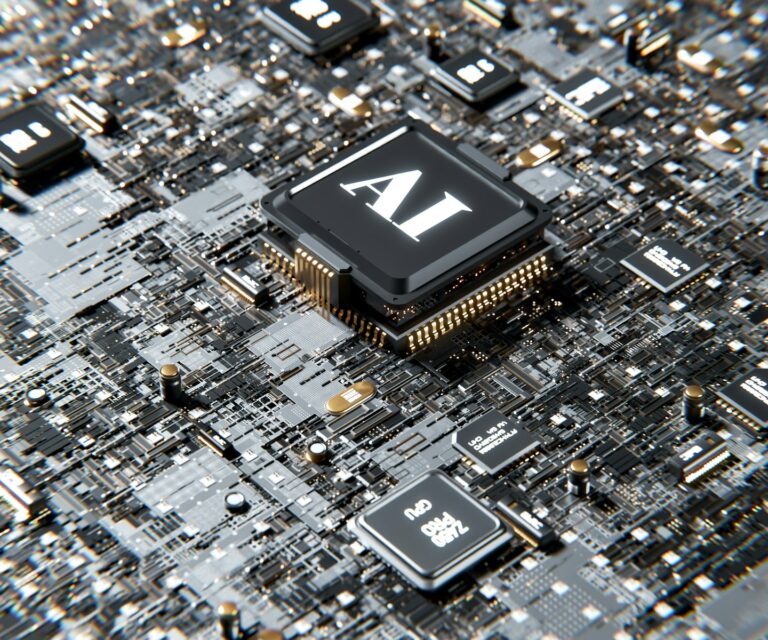Why Every Business Will Need a Chief AI Officer (CAIO)
Artificial intelligence has moved beyond being a competitive advantage — it’s now a strategic necessity. As organizations integrate AI into every aspect of their operations, a new executive role is emerging to lead this transformation: the Chief AI Officer (CAIO).
Much like the rise of the Chief Information Officer (CIO) during the IT revolution, the CAIO will become indispensable in the age of agentic AI, autonomous systems, and AI-driven strategy.
The Rise of the CAIO
Over the next five years, nearly every serious enterprise will need a Chief AI Officer. The reason is simple: AI is no longer confined to innovation labs or pilot projects. It’s now at the core of operations, marketing, finance, HR, and product development.
The CAIO’s role is to ensure that AI isn’t just adopted, but strategically orchestrated across the business. This executive will:
- Define the company’s AI vision and roadmap.
- Oversee data infrastructure, agent deployment, and ethical governance.
- Bridge the gap between technical AI teams and business leadership.
- Identify new revenue streams driven by autonomous intelligence.
In short, the CAIO will be the architect of a company’s AI-first operating model.
From Digital Transformation to AI Transformation
For the past decade, businesses have focused on digital transformation — cloud migration, app ecosystems, and data-driven decisions. The next phase is AI transformation: rebuilding organizations around intelligent, adaptive systems.
The CAIO sits at the center of this shift, ensuring that AI capabilities evolve from experimental tools to mission-critical infrastructure. This means overseeing:
- AI integration: Embedding intelligent agents across workflows.
- Governance & ethics: Ensuring transparency, fairness, and compliance.
- Upskilling: Preparing the workforce for AI-augmented roles.
- Innovation: Identifying opportunities for new AI-driven products and markets.
The Business Case for a Chief AI Officer
AI touches every business function — but without leadership, it creates fragmentation and risk. Companies that lack centralized AI strategy face:
- Duplicate or incompatible models across departments.
- Poor data governance and compliance issues.
- Missed opportunities for automation and cost reduction.
- Competitive lag as rivals deploy smarter systems faster.
The CAIO ensures alignment, accountability, and acceleration — turning AI from an experiment into a profit engine.
The CAIO’s Core Responsibilities
The Chief AI Officer will oversee both technical and strategic pillars:
1. Strategy & Governance
- Define enterprise-wide AI objectives.
- Ensure ethical AI practices and regulatory compliance.
- Create frameworks for agentic AI deployment and monitoring.
2. Data & Infrastructure
- Manage data pipelines, security, and interoperability.
- Oversee training, fine-tuning, and scaling of proprietary models.
- Integrate AI systems into enterprise architecture.
3. Innovation & Growth
- Partner with R&D to create new AI-driven products.
- Leverage predictive and generative models for decision-making.
- Explore opportunities in AI marketplaces like BestAIAgents.io to deploy or license specialized agents.
4. Human-AI Collaboration
- Build teams that combine human creativity with machine efficiency.
- Redefine job roles and workflows around AI capabilities.
- Foster a culture of trust and understanding between employees and AI systems.
The CAIO and the Agentic Workforce
As businesses transition to agentic ecosystems — networks of AI agents working across departments — the CAIO will oversee how these systems interact, collaborate, and scale.
For example:
- Marketing teams may use AI agents to design campaigns, analyze data, and optimize ad spend.
- Operations teams may rely on logistics and procurement agents.
- Finance teams may deploy autonomous forecasting and compliance agents.
The CAIO will manage this ecosystem, ensuring interoperability, accountability, and performance.
Why Businesses Without a CAIO Will Fall Behind
Organizations that treat AI as a siloed function will soon find themselves at a severe disadvantage. The pace of AI development is exponential; managing it requires vision, technical literacy, and strategic alignment at the highest level.
Without a CAIO, companies risk:
- Falling behind in AI adoption and innovation.
- Failing to capitalize on automation efficiencies.
- Facing reputational damage due to unregulated AI practices.
The Future of Executive Leadership
Just as every company today has a CEO, CFO, and CIO, within a few years, having a Chief AI Officer will be standard practice. The CAIO will not only oversee AI operations but will help redefine business models, workforce structures, and competitive strategy.
The Role of BestAIAgents.io
Platforms like BestAIAgents.io will empower CAIOs by providing access to vetted, enterprise-ready AI agents. These platforms will serve as strategic AI marketplaces, allowing organizations to rapidly experiment, deploy, and scale AI-driven capabilities.
In this new economy, the CAIO will not just manage technology — they will orchestrate intelligence.












